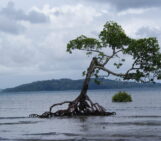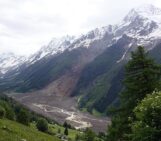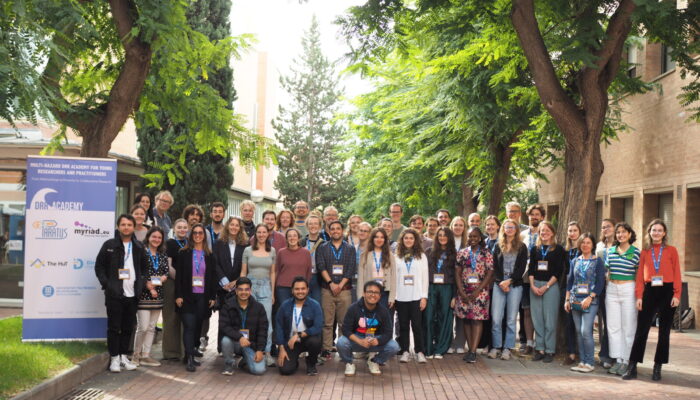
From 23 to 26 October 2024, over 40 early-career researchers and practitioners from across the globe gathered at Universitat Politècnica de Catalunya (UPC) in Barcelona (Spain) for the Multi-hazard Disaster Risk Reduction (DRR) Academy. Set against the vibrant backdrop of this dynamic city, the Academy offered a unique platform for participants to engage, learn, and collaborate on the complex challenges of multi-hazard risk management. Organised as a joint effort by leading research projects—Paratus, MYRIAD-EU, The-HuT, and Directed—the Academy brought together a diverse group of professionals working at the forefront of disaster resilience. The goal was clear: to foster an inter- and trans-disciplinary community capable of addressing the systemic challenges of disaster risk reduction in a world increasingly shaped by interconnected hazards.
A New Kind of Learning Environment
The Academy’s format broke away from the rigid structures of traditional conferences. Instead, it embraced a highly interactive and participatory approach, where early-career professionals didn’t just observe but actively shaped the programme. At its core was a philosophy of peer-to-peer learning—participants were encouraged to share their knowledge and experiences, lead breakout workshops, and engage in meaningful dialogue with their peers.
Far from the usual top-down lectures, the event’s dynamic structure included thematic breakout sessions, plenary lessons, poster presentations, and a hands-on proposal writing workshop. Senior researchers supported these efforts, but the spotlight remained on the participants, who brought fresh energy and perspective to the discussions.
This approach cultivated an atmosphere that was both professional and approachable. The competitive edge often felt in academic or professional settings gave way to a genuine spirit of collaboration and mutual support.
Unpacking the Themes
The Academy centred around four key themes, each addressing a critical aspect of multi-hazard DRR:
-

(Image credit: DRR Academy participants)
Identifying Multi-hazard Events: Participants explored how to identify complex events involving co-occurring, consecutive, or triggering hazard combinations. These discussions also delved into the probabilities and interrelations of such events, reflecting the increasingly intricate nature of disasters in a changing world.
- Dynamics of Vulnerability and Exposure: How do vulnerabilities and exposure change over time? This theme examined the evolving nature of risk, influenced by factors such as past disasters, urbanisation, and underpinning socio-economic context. Participants discussed methods to assess these dynamics and integrate them into DRR strategies.
- Multi-hazard Risk Impacts and DRR Strategies: With multi-hazard events often resulting in compounding impacts, this theme looked at how to assess and mitigate these effects under changing environmental and social conditions.
- The Human Factor in DRR: Perhaps the most cross-cutting theme, this session emphasised the critical role of human behaviour, community engagement, and stakeholder involvement in building resilience. From decision-making processes to local knowledge, participants explored how human dynamics shape disaster outcomes.
After a preliminary introductory plenum, each theme was brought to life through practical exercises, breakout workshop sessions, and lively debates, ensuring that participants left with insights they could immediately apply to their work.
A Collaborative Atmosphere
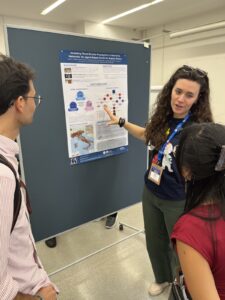
(Image credit: DRR Academy participants)
One of the Academy’s standout features was its commitment to fostering collaboration. Despite the competitive nature of research and practice, the event created an environment of openness and shared purpose. Participants exchanged hard and soft skills, offering constructive feedback on each other’s ideas and forging connections that will likely extend far beyond the event itself.
The poster presentations were a perfect example of this spirit. Participants showcased their work, sparking discussions often spilling over into coffee breaks and evening social activities. These interactions highlighted the diverse approaches across disciplines and geographies, revealing common challenges and potential solutions.
A particularly engaging element was the proposal-writing workshop on the final day. This collaborative exercise encouraged participants to integrate what they had learned throughout the Academy and think critically about designing impactful, interdisciplinary projects.
Beyond the Academy
The Multi-hazard DRR Academy wasn’t just about discussing the risks of cascading or interconnected hazards. It was about equipping the next generation of researchers and practitioners to think beyond silos, embrace collaboration, and innovate in the face of complexity.
By the time the Academy concluded, participants weren’t merely leaving with notebooks full of ideas—they were walking away with a network of like-minded peers and a shared commitment to building a safer, more resilient world.
As disasters become more multifaceted and interconnected, the importance of such initiatives cannot be overstated. Barcelona’s Academy showed that by investing in young professionals and fostering inter- and transdisciplinary collaboration, we can better prepare for the challenges of tomorrow.
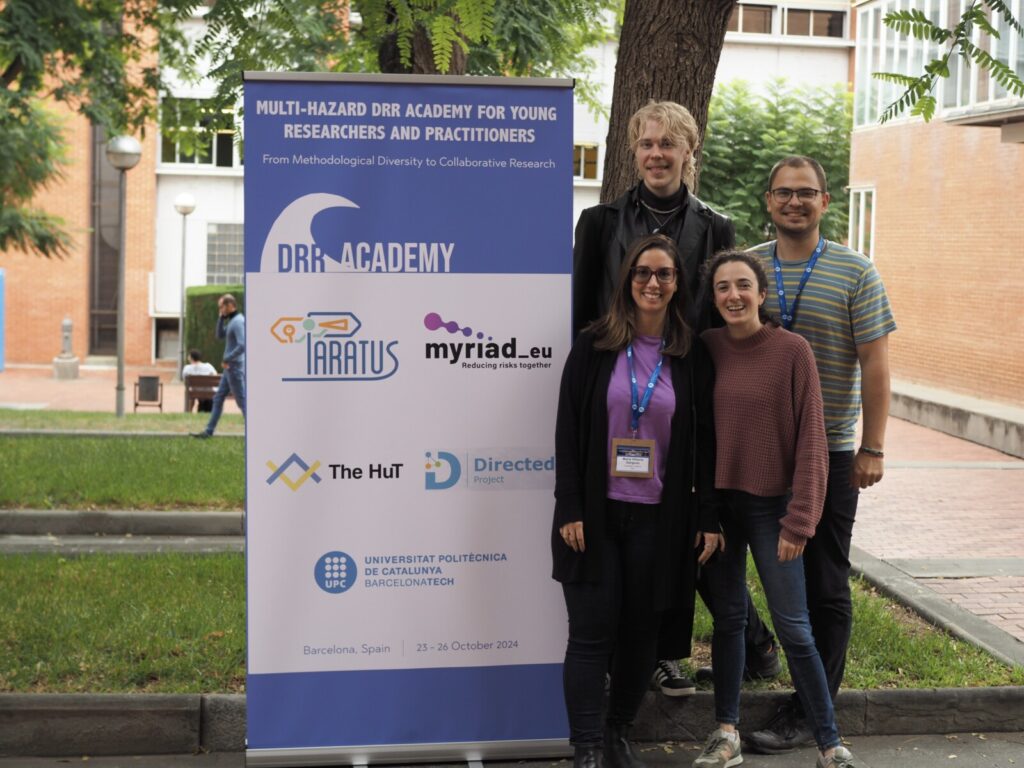
(Image credit: DRR Academy participants)
What is next?
The Academy’s organising projects—Paratus, MYRIAD-EU, The-HuT, and Directed—aren’t stopping here. Those interested in continuing the conversation can look forward to a dedicated scientific session, a short course at the EGU General Assembly 2025, and #StayTuned for a second edition! These upcoming events will offer further opportunities to engage with this growing community and explore cutting-edge research in multi-hazard DRR.
Post edited by Asimina Voskaki and Hedieh Soltanpour


